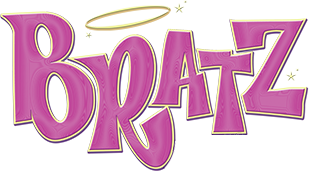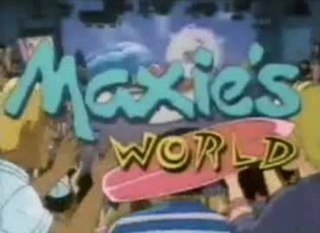Related Research Articles

Mattel, Inc. is an American multinational toy manufacturing and entertainment company founded in Los Angeles by Harold Matson and the husband-and-wife duo of Ruth and Elliot Handler in January 1945 and currently headquartered in El Segundo, California. Having presence in 35 countries and territories and its products sold in more than 150 countries, Mattel operates through three business segments: North America, International and American Girl.

Barbie is a fashion doll manufactured by American toy company Mattel and launched in 1959, created by American businesswoman Ruth Handler. Barbie is the figurehead of a brand of Mattel dolls and accessories, including other family members and collectible dolls. Barbie has been an important part of the toy fashion doll market for over six decades and has been the subject of numerous controversies and lawsuits, often involving parodies of the doll and her lifestyle. Mattel has sold over a billion Barbie dolls, making it the company's largest and most profitable line.

Bratz is an American fashion doll and media franchise created by former Mattel employee Carter Bryant for MGA Entertainment, which debuted in 2001.
Since Barbie's introduction as a teenage fashion model in 1959, the doll has been portrayed with many careers. Dolls are sold with sets of clothes and accessories that fit the career being portrayed. For example, the Lifeguard Barbie playset includes a Barbie, an outfit with shoes, a lifeguard chair, a dolphin, and a life preserver, while the Spanish Teacher Barbie includes a Barbie, an outfit with shoes, flashcards, a Spanish quiz, an easel, a notebook, a key chain, and a hairbrush.
The Barbie Liberation Organization or BLO, sponsored by RTMark, were a group of artists and activists involved in culture jamming. They gained notoriety in 1993 after switching voice boxes in talking G.I. Joes and Barbie dolls. The BLO performed "surgery" on a reported 300–500 dolls from retail and returned them to shelves, an action they refer to as shopgiving. Thus, Teen Talk Barbie dolls would say phrases such as "Vengeance is mine", while G.I. Joe dolls would say phrases such as "The beach is the place for summer!" and both dolls as a result, were completely ruined.
Chatty Cathy is a pull-string "talking" doll originally created by Ruth and Elliot Handler and manufactured by the Mattel toy company from 1959 to 1965. The doll was first released in stores and appeared in television commercials beginning in 1960, with a suggested retail price of $18.00, though usually priced under $10.00 in catalog advertisements. Chatty Cathy was on the market for six years and was the second most popular doll of the 1960s after Barbie.

"Lisa vs. Malibu Stacy" is the fourteenth episode of the fifth season of the American animated television series The Simpsons, and the 95th episode overall. It originally aired on the Fox network in the United States on February 17, 1994. Lisa challenges the Malibu Stacy dollmakers to make a less sexist doll. With Malibu Stacy's original creator, Stacy Lovell, Lisa creates the doll Lisa Lionheart to positively influence young girls.

Fashion dolls are dolls primarily designed to be dressed to reflect fashion trends. They are manufactured both as toys for children to play with and as collectibles for adults. The dolls are usually modeled after teen girls or adult women, though child, male, and even some non-human variants exist. Contemporary fashion dolls are typically made of vinyl or another plastic.

My Scene is an American series of fashion dolls that Mattel released in 2002. They were discontinued in the US in 2008, and worldwide in 2011. Mattel's Barbie character is one of the dolls in the toy line. The My Scene dolls' bodies are slim, similar to earlier Barbie dolls, but their heads are larger. The New York Times described their features as "exaggerated lips and bulging, makeup-caked eyes." My Scene were designed to appeal to the tween market and compete with the Bratz dolls from MGA Entertainment.

Flavas is an American line of fashion dolls created by Mattel in 2003. They are multi-ethnic and have an urban, hip hop style with "bling-bling" jewellery and stick-on tattoos, described as "ghetto-fabulous" by Newsweek. They were designed to appeal to tweens and compete with the widely successful Bratz dolls. They were marketed as "reality-based" and "authentic" and have more points of articulation than traditional fashion dolls for more expressive posing.
See 'n Say is an educational toy created by Mattel in 1964 after the success of Chatty Cathy. It was the first Mattel talking toy allowing children to choose the exact phrase as heard. Although the first release focuses on farm animal sounds, it had spawned through many themes from the alphabet, counting, nursery rhymes, to licensed products.

Sindy is a British fashion doll created by Pedigree Dolls & Toys in 1963. A rival to Barbie, Sindy's look and range of fashions and accessories made her the best-selling toy in the United Kingdom in 1968 and 1970. After Marx Toys' unsuccessful attempt to introduce Sindy in the United States in the late 1970s, Hasbro bought the rights to Sindy and remodelled the doll to look more American. As a result, the doll's popularity declined; in addition Barbie manufacturer Mattel filed a lawsuit for copyright infringement, which was settled when Hasbro agreed to remodel Sindy's face. During the 1990s, Barbie's share of the doll market continued to grow while Sindy's diminished, which led to Sindy being delisted from major retailers in 1997. Hasbro returned the doll's licence to Pedigree, and the doll was relaunched in 1999, manufactured by Vivid Imaginations. Sindy's 40th anniversary in 2003 saw a new manufacturer, New Moons, and another relaunch and redesign. There was a further relaunch in 2023.

Maxie's World is an American animated children's television program produced by DIC Animation City. Distributed by Claster Television and Saban International and originally aired in first-run syndication in the United States from September 14, 1987 through October 27, 1987. It consists of one season, comprising a total of 32 episodes, each 15 minutes long. In the series' original run, Maxie's World alternated on weekdays with Beverly Hills Teens and It's Punky Brewster. The series was briefly rerun on USA Network in 1994.
Earring Magic Ken, also known as "Gay Ken" and "Fey Ken", is a model of the Ken doll introduced by Mattel in 1993 as a companion to its Earring Magic Barbie figure, one of five dolls in the Earring Magic Barbie line.

Barbie, a fashion doll manufactured by American toy and entertainment company Mattel, has been featured in an eponymous media franchise since the late 1980s, encompassing a CGI/computer-animated film series that later expanded to other productions and media formats. Referred to among fans as the "Barbie Cinematic Universe", it has become one of the highest-grossing media franchises of all time. The film series aired regularly on Nickelodeon in the United States from 2002 until 2017 where they moved over to streaming services like Netflix, Google Play and Apple TV+. The films revamped into streaming television films 3 years later, which are marketed by Mattel as "specials" and picked up for television broadcast in multiple countries and regions/territories.
Monster High is an American multimedia-supported fashion doll franchise created by toy designer Garrett Sander and launched by Mattel in 2010. The show is aimed at children ages 7-14, the franchise features characters inspired by monster movies, sci-fi horror, thriller fiction, folklore, myths and popular culture, centering around the adventures of the teenage children of monsters and other mythical creatures attending a high school of the same name.

Barbie: Big City, Big Dreams is a 2021 computer-animated musical adventure buddy film directed by Scott Pleydell-Pearce, produced by Emory Ronald "Ron" Myrick and written by Christopher Keenan and Catherine "Kate" Splaine.
References
- 1 2 3 4 Linda van Laren, "Math Class Is Tough", in Girl Culture: An Encyclopedia, ed. Claudia A. Mitchell and Jacqueline Reid-Walsh, Volume 2, Westport, Connecticut / London: Greenwood, 2008, ISBN 978-0-313-33910-3, pp. 423–24.
- 1 2 3 "Company News: Mattel Says It Erred; Teen Talk Barbie Turns Silent on Math", The New York Times , October 21, 1992.
- 1 2 Dawn Herlocher, "Barbie & Friends", 200 Years of Dolls: Identification and Price Guide, 3rd ed., Iola, Wisconsin: Krause, 2005, ISBN 9780896891678, p. 81.
- ↑ John Boone, "The 14 Most Controversial Barbies Ever", Entertainment Tonight , November 24, 2014.
- 1 2 David Firestone, "While Barbie Talks Tough, G. I. Joe Goes Shopping", The New York Times, December 31, 1993.
- 1 2 3 Susan A. Nolan and Thomas Heinzen, Statistics for the Behavioral Sciences, 2nd ed., New York: Worth, 2012, ISBN 9781429232654, p. 196.
- 1 2 3 Catherine Driscoll, "We Girls Can Do Anything, Can't We Barbie?", in Girl Culture: An Encyclopedia, ed. Claudia A. Mitchell and Jacqueline Reid-Walsh, Volume 1, Westport, Connecticut / London: Greenwood, 2008, ISBN 978-0-313-33909-7, pp. 41–42, p. 41.
- ↑ Andrew McClary, "Bad Barbies?", Good Toys, Bad Toys: How Safety, Society, Politics, and Fashion Have Reshaped Children's Playthings, Jefferson, North Carolina / London: McFarland, 2004, ISBN 9780786418374, pp. 34–35 and note 18, p. 183, citing Ken Schroeder, "In Brief ... Barbie Doesn't Add Up", The Education Digest 58 (December 1992) 72–75.
- ↑ Associated Press, "Talking Barbie dolls called sexist", The News-Journal (Daytona Beach, Florida), October 3, 1992, p. 6A.
- ↑ David Grimes, New York Times regional newspapers, "Being brainwashed by a talking toy", The Times-News (Hendersonville, North Carolina), October 17, 1992, p. 12A.
- ↑ According to van Laren, "Math Class Is Tough", Mattel only promised that the phrase would no longer be juxtaposed with "Want to go shopping?" and "Okay, meet me at the mall".
- ↑ John Martin, "TV Tonight: Highlights", Lakeland Ledger , February 17, 1994, p. 4C.
- ↑ McClary, p. 35.